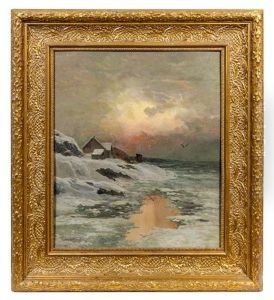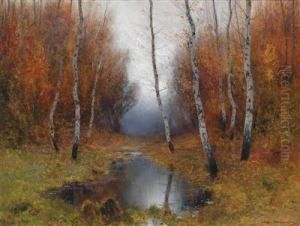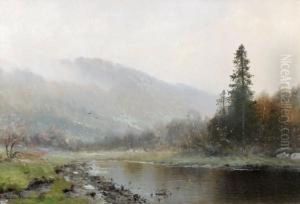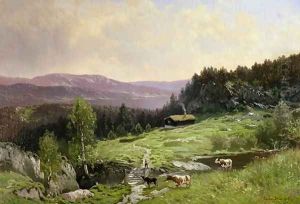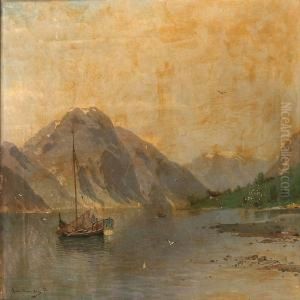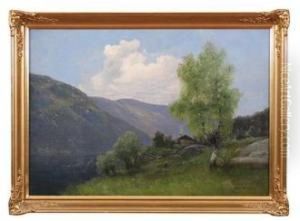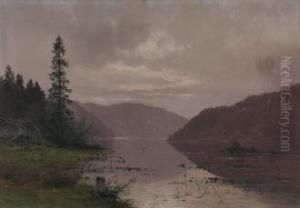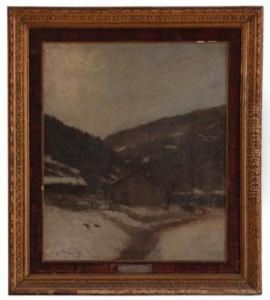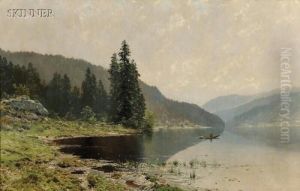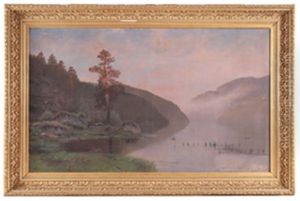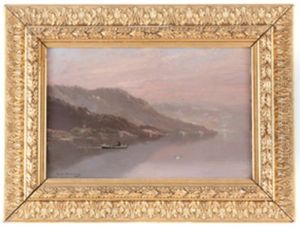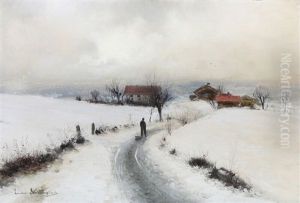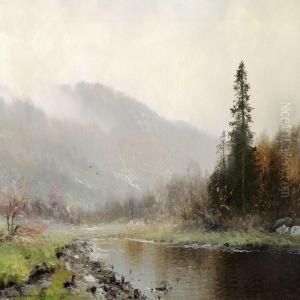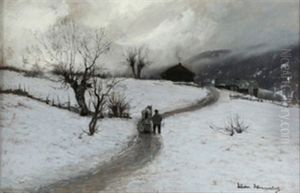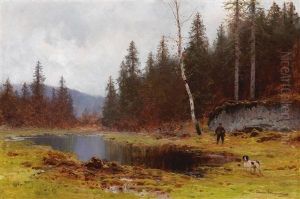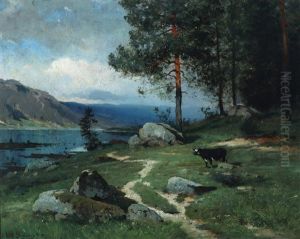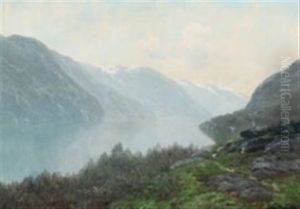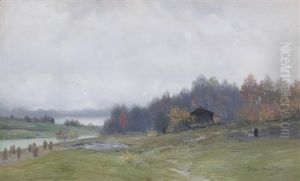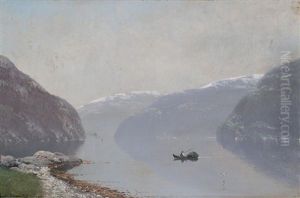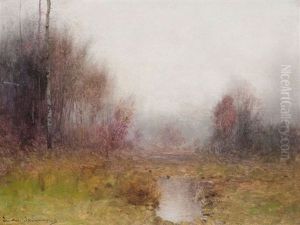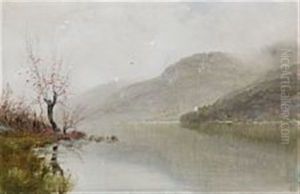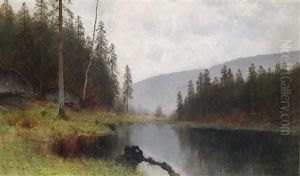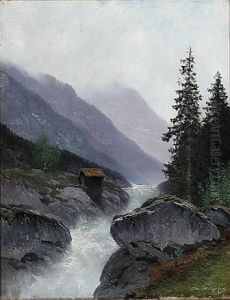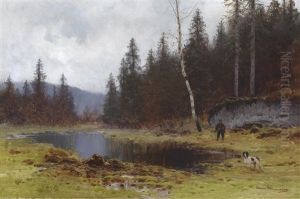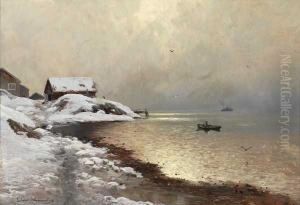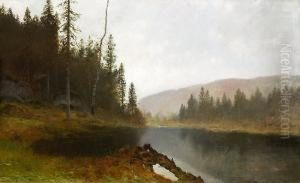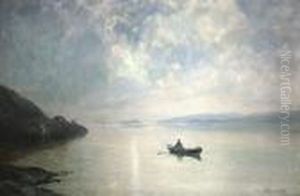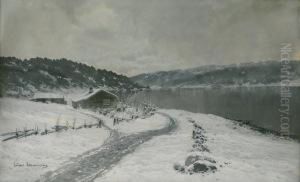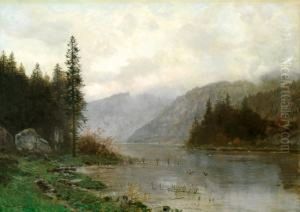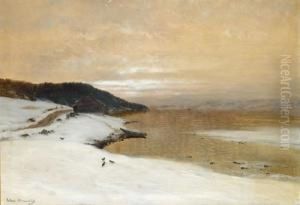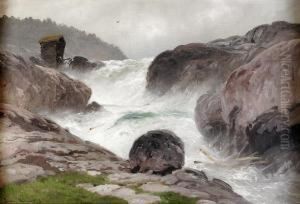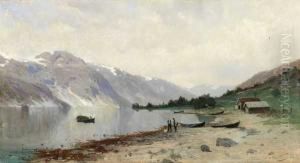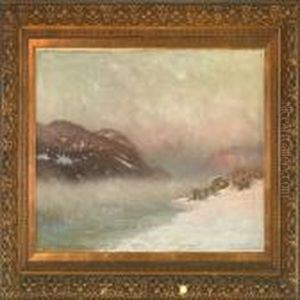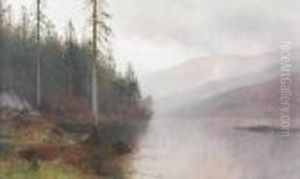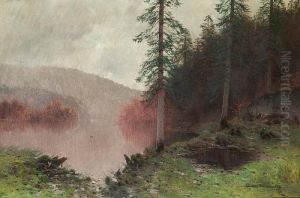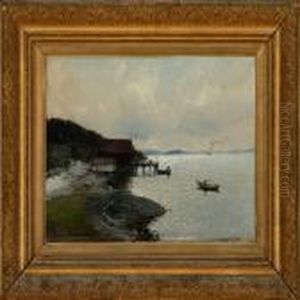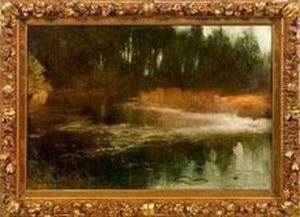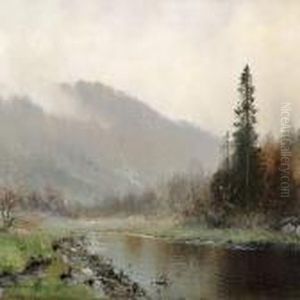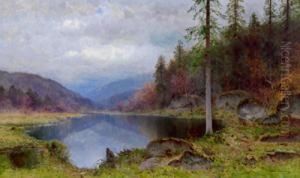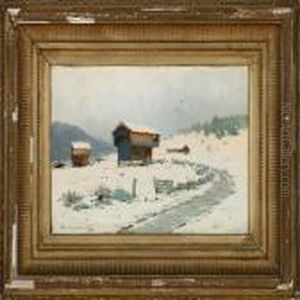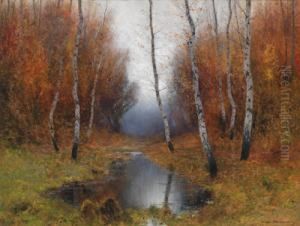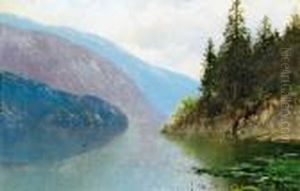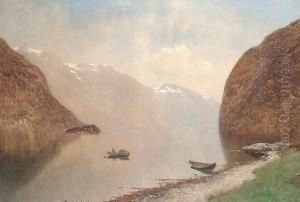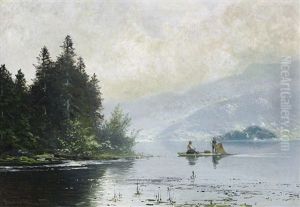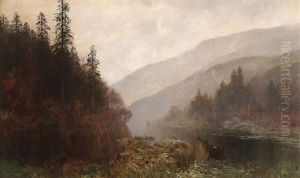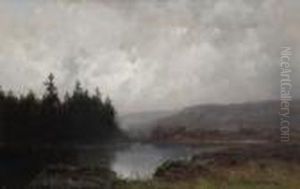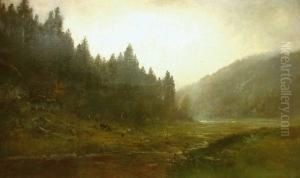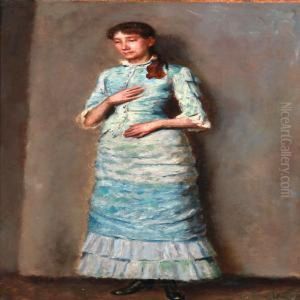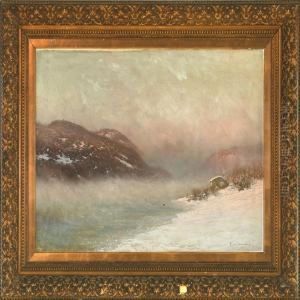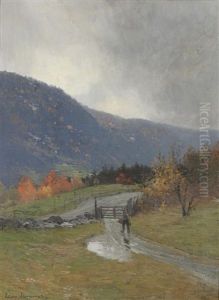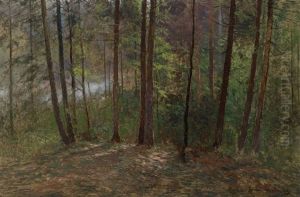Ludvig Skramstad Paintings
Ludvig Skramstad was a Norwegian painter, born in 1855 in Hedmark, Norway. Best known for his landscape paintings, Skramstad captured the quintessential Scandinavian scenery with a particular focus on the beauty of his native Norway's wilderness. His artistic journey began at the Royal School of Art and Design of Christiania (now Oslo) where he studied under the guidance of Knud Bergslien. He later continued his education in Germany, which was a popular destination for Scandinavian artists seeking to refine their skills and techniques during the late 19th century.
Skramstad's work is characterized by a romanticized view of nature, with a keen attention to the interplay of light and shadow, often depicting the serene and untouched aspects of the Norwegian landscapes. His paintings are noted for their detailed and atmospheric qualities, which were influenced by the National Romanticism movement that was prevalent in Norway during his time. This movement sought to develop a distinct Norwegian cultural identity through the arts, in response to the country's political union with Sweden.
Throughout his career, Skramstad participated in numerous exhibitions and received favorable reviews for his depictions of the Nordic wilderness. His paintings contributed to the cultural movement that helped define Norwegian national identity in the post-independence era. He was a contemporary of more famous Norwegian artists like Edvard Munch, though Skramstad's approach to painting was more traditional and less experimental than Munch's.
Ludvig Skramstad's artistic legacy is preserved in various art museums in Norway and in private collections. Despite not being as widely recognized as some of his contemporaries, his work continues to be appreciated for its contribution to the understanding and appreciation of Norway's natural beauty and cultural heritage. Skramstad passed away in 1912, leaving behind a body of work that continues to inspire and captivate art enthusiasts and collectors.
